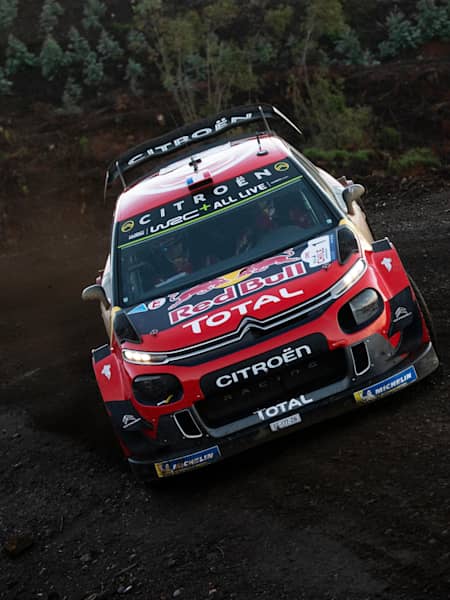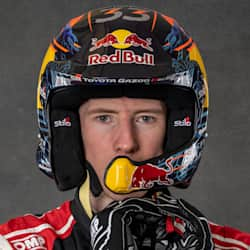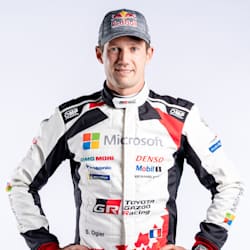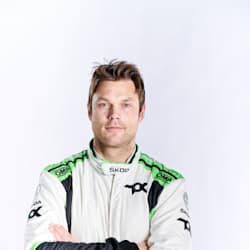Red Bull Motorsports
Unlike Formula One, the World Rally Championship – aka the pinnacle of rallying – is open to everybody. Get involved and you could be competing on the same stretch of road as Sébastien Ogier, Jari-Matti Latvala et al – and sooner than you think…
But how did the sport’s superstars get to where they are today? We got a few of them together to give us a few pointers.
1. Join a car club
Hyundai star Hayden Paddon started his career with a trip to his local car club, which led to him competing in events in an old Mini. The Kiwi says: “It doesn’t matter what you want to do in the sport: drive, co-drive, marshal, work as an engineer – your local car club will have somebody to help. Get in there and network with the members. There will always be people in the club looking for help or for somebody to get involved. And anybody can be involved.”
2. Find a mentor
Once you’re in the car club – a move Volkswagen’s flying Finn Jari-Matti Latvala fully endorses – it’s time to make a friend. “Find somebody or some people you can work with,” says Latvala. “Somebody who has good experience who can give you some guidance about a good way to go in the sport. It’s important to have this kind of support if you are going to be a driver or a co-driver.”
3. Head to a rally school
So you’ve watched rallying on TV, YouTubed the best bits of WRC action since time began and now you’ve made new friends at the car club. But the important question is: do you actually like driving a rally car?
Before jumping in with both feet and parting with your hard-earned cash, pick out a rally school and book a day’s introduction course. Rally cars can be quite intimidating once you’re behind the wheel, so it’s best see if this is for you. If it’s not, don’t worry. Sit on the other side and give co-driving a go, or get out there and marshal; these volunteers are the unsung heroic backbone of our sport.
Enjoy the promo video below for the world-famous DirtFish Rally School, based in Washington state in the USA.
4. Find a car… even if it’s slow
OK, so you've decided that it’s the driving that’s for you, and now you need some wheels. Here’s some advice from Jari-Matti Latvala on which car to go for. “Try to drive as many different cars as you can. Try rear-, front- and four-wheel drive. Driving these cars will give you a much better feel for what the car is doing. And don’t worry if your car’s not the most powerful; when you are starting out, that doesn’t matter. It’s very good to learn to drive your first car to the maximum before you think about moving up and getting a more powerful car. If you do make mistakes – say you roll the car – then you have a better chance of understanding what happened if you are in a slower car and at a slower speed. What’s also really important is the right safety equipment. Don’t start without it!”
Former Peugeot mechanic Sébastien Ogier started his career in one of the marque's 206s back in 2006. Now he's a six-time world champion!
5. Safety first
M-Sport World Rally Team driver Elfyn Evans agrees with Jari-Matti. “It’s got to be safety first,” says the Welshman. “When you’re building or buying your first car, get a scrutineer to have a look over it and make sure everything’s as it should be. You’ll probably have a scrutineer in your local car club – ask them to help. It’s not just the brakes, the roll cage and the fire extinguishers; make absolutely sure the seat fits you perfectly and the belts are absolutely correct. Then, get yourself a HANS device and the best crash helmet you can possibly afford. You can replace the car, but you can’t do the same with your head!”
6. Drive anything and everything
Unlike circuit racers, rally drivers don’t get the chance to drive lap after lap to learn tracks and conditions. Instead, you’ll pretty much have to learn on the job. So whenever you get the opportunity to drive any car, anywhere, at any time, do it – there’s no replacement for seat time.
“Experience is so, so important in our sport,” says five-time WRC winner Kris Meeke. “When I was starting out, I wanted to be driving all the time. It doesn’t matter the weather conditions or the surface, you need to build yourself a database of knowledge of what happens on that surface if it’s dry or damp.” Latvala adds: “Try to find a rallycross track. This is a good place because you have a changing surface and a little bit more space if you make a mistake.”
7. Start working in the sport
When 2001 World Rally champion Richard Burns started out, he threw himself into the sport he loved. He worked as an instructor at a rally school, helped out as a mechanic on teams and drove vans for the Prodrive Subaru World Rally Team that he’d one day compete for.
Richard saw straight away the advantages of being in the environment of a factory team, and he took much of what he learned as the team’s gofer and used it in his own driving career. Working with any professional or semi-pro outfit offers an incredible insight into the sport’s highest level, and gives a young driver an idea of what they have to be aiming to achieve.
So to sum up, if you want to start rally driving…
- Join your local car club
- Find a mentor
- Go to a rally school
- Find a car – even a slow one
- Buy the right safety gear
- Get as much seat time as you can on different surfaces – rallycross is a good way to do this
- Start working in the sport
Part of this story












